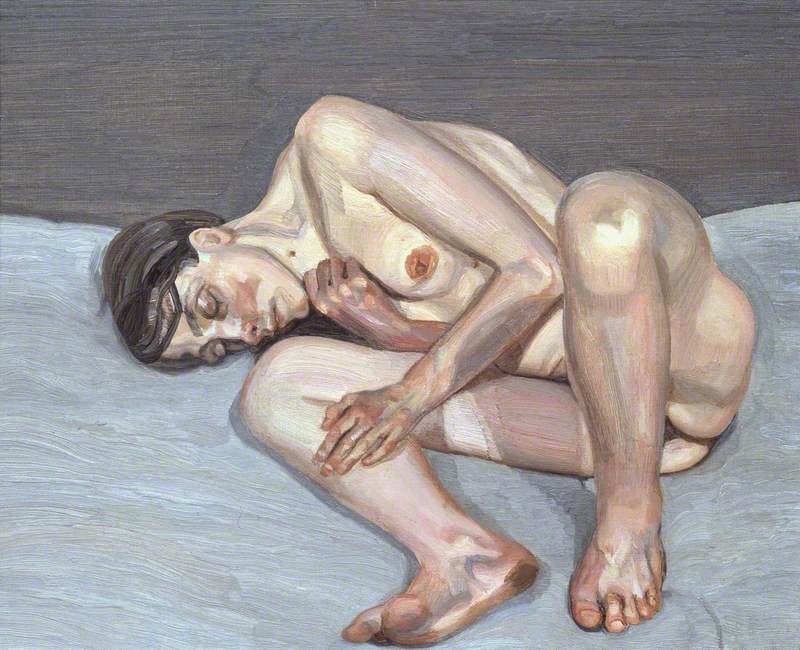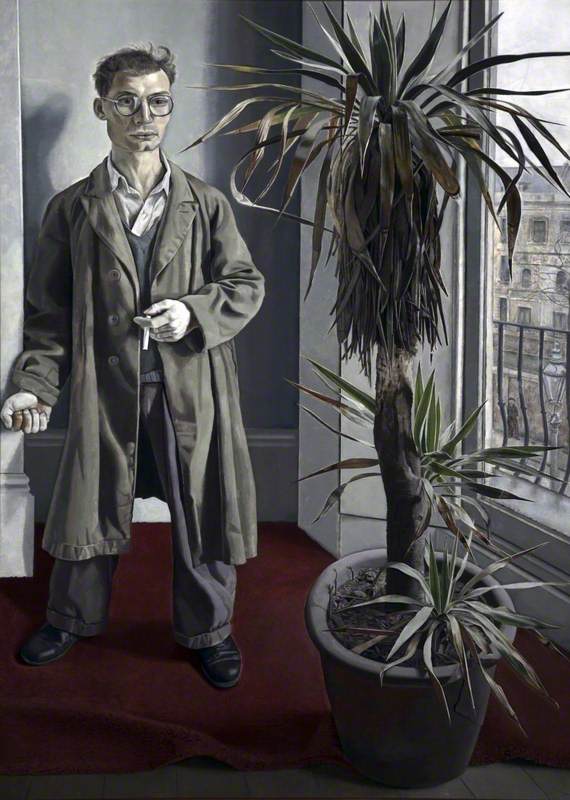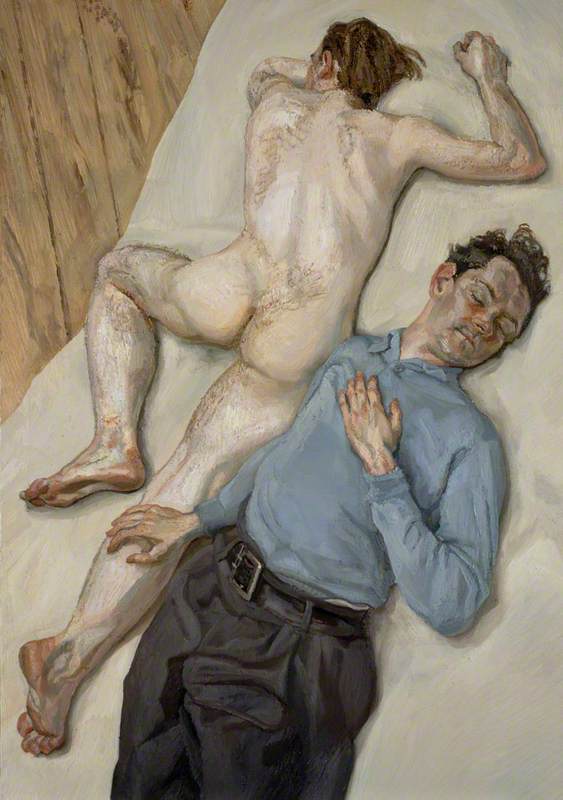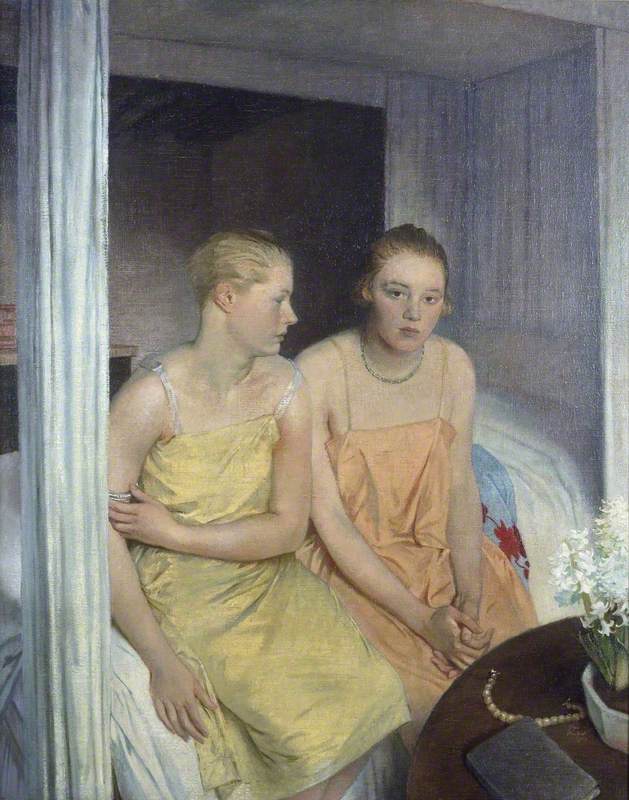Lucian Freud was widely recognised as one of the most important British artists of the last century, and was often called the greatest figurative painter of his time.
Man's Head (Self Portrait I)
1963
Lucian Freud (1922–2011) 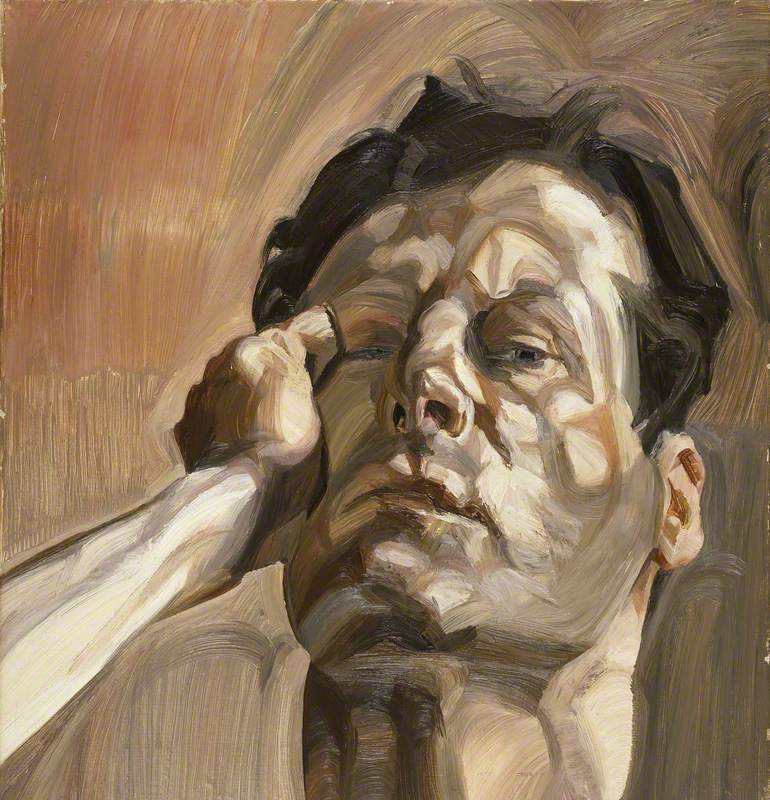
Freud (the grandson of Sigmund Freud) was born in Germany in 1922, but moved to England in the 1930s. He trained briefly in London and Dedham, East Anglia, before moving to London, where he lived and worked for over 60 years. In 2008 his portrait of Sue Tilley, Benefits Supervisor Sleeping, was sold at auction for $33.6 million, at that time the highest price ever paid for a work by a living artist.
View this post on Instagram
An important early masterpiece is Interior at Paddington.
It depicts a dishevelled man, standing, fist clenched, in a small interior space adjacent to a plant of the same size. The feeling of claustrophobia caused by this juxtaposition, and the densely packed space, is typical of Freud. From the late 1950s Freud's style became increasingly loose, with shape and depth being built up by thick dabs of paint.
His work displays an interest in texture and colour, particularly when depicting human flesh, as he regularly did. His working process was notoriously slow, involving sustained interaction with his sitters.
Freud frequently painted people he was close to: friends, such as the artist Francis Bacon, and family members, including his daughters, many of whom were portrayed naked.
He occasionally painted portraits of famous people, notably the Queen and Kate Moss.
Lucian Freud and Queen Elizabeth II
2001
David Dawson 
Freud's focus on the personality and humanity of his sitters is seen in the fact that he referred to his nudes as 'naked portraits', thus highlighting their psychological depth. His portraits are not concerned with flattery or sentimentality: they are revealing, intense and sometimes uncomfortable to look at.
Much of Freud's work is privately owned, but it can be seen in Britain at the Walker Art Gallery in Liverpool, The New Art Gallery Walsall, Tate Britain in London, and in the Arts Council Collection.
Rebecca Nicholl, former Art UK Editorial Assistant
